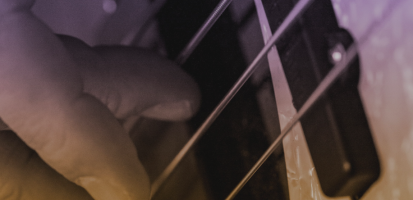| Stanley Clarke | |
|---|---|
 |
|
| Background information | |
| Born | (1951-06-30) June 30, 1951 Philadelphia, Pennsylvania United States |
| Genres | Jazz, jazz fusion, funk, rock, pop, R&B |
| Occupation(s) | Musician, composer |
| Instruments | Double bass, bass guitar |
| Years active | 1966–present |
| Labels | Mack Avenue, Polydor, Epic, Jazz Door, Heads Up, Columbia, Sony, Portrait, Nemperor |
| Associated acts | Return to Forever, George Duke, The New Barbarians, Fuse One, SMV, Animal Logic |
| Website | stanleyclarke.com |
|
Notable instruments: |
|
Stanley Clarke (born June 30, 1951) is an American jazz musician and composer known for his innovative and influential work on double bass and electric bass as well as for his numerous film and television scores. He is best known for his work with the fusion band Return to Forever, and his role as a bandleader in several trios and ensembles.
Clarke was born in Philadelphia. He was introduced to the bass as a schoolboy when he arrived late on the day instruments were distributed to students and acoustic bass was one of the few remaining selections. A graduate of Roxborough High School in Philadelphia, he attended the Philadelphia Musical Academy, (which was absorbed into the University of the Arts in 1985) from which he graduated in 1971. He then moved to New York City and began working with famous bandleaders and musicians including Horace Silver, Art Blakey, Dave Brubeck,Dexter Gordon, Gato Barbieri, Joe Henderson, Chick Corea, Pharoah Sanders, Gil Evans and Stan Getz.
Bands and collaborations

Stanley Clarke was also a member of The New Barbarians, a band Ronnie Wood (The Rolling Stones) had assembled in 1979 to play gigs in the US, Canada and UK. Other band members included Keith Richards, Ziggy Modeliste (The Meters), Ian McLagan and Bobby Keys. This version of the New Barbarians played their final concert in the Knebworth Festival, 1979. To date three official live recordings have been released of the New Barbarians 1979 tour. These all include Stanley Clarke as bass player.
In the late 1980s, Clarke and drummer Stewart Copeland, of the rock band The Police, formed Animal Logic with singer-songwriter Deborah Holland. In 2005 Clarke toured as Trio! with Béla Fleck and Jean-Luc Ponty. The U.S. and European tour was nominated for a 2006 Jammy Award in the category of “Tour of the Year.” He has also played with Jeff Beck, Ron Wood, Larry Carlton, Billy Cobham and Al Di Meola.
In 2009 he released Jazz in the Garden, featuring the Stanley Clarke Trio with pianist Hiromi Uehara and drummer Lenny White. The following year he released the Stanley Clarke Band, with Ruslan Sirota on keyboards and Ronald Bruner, Jr. on drums; the album also features Hiromi on piano.
When playing electric bass, Clarke places his right hand so that his fingers approach the strings much as they would on an upright bass, but rotated through 90 degrees. To achieve this, his forearm lies above and nearly parallel to the strings, while his wrist is hooked downward at nearly a right angle. For lead and solo playing, his fingers partially hook underneath the strings so that when released, the strings snap against the frets, producing a biting percussive attack. In addition to an economical variation on the funky Larry Graham-style slap-n’-pop technique, Clarke also uses downward thrusts of the entire right hand, striking two or more strings from above with his fingernails (examples of this technique include “School Days”, “Rock and Roll Jelly”, “Wild Dog”, and “Danger Street”).
Equipment
Clarke has long been associated with Alembic basses, and much of his recorded output has been produced on Alembic instruments, particularly a dark-wood-colored custom bass in the Series II body style. These basses are handmade neck-through-body instruments made from a mixture of exotic woods and a proprietary-active-pickup system that is powered from an external power supply. A Stanley Clarke Signature Model bass guitar is produced by Alembic. Clarke also utilizes full-range amplification for his basses, including two QSC 2050 amplifiers, more in keeping with a keyboardist’s rig than a bassist’s or guitarists. To extend his melodic range, he also plays on tenor and piccolo basses. Clarke’s are usually short scale (78 cm or 30.75″), four string, Carl Thompson or Alembic.
In the late 1970s, Clarke was playing Rick Turner’s first graphite neck on his Alembic “Black Beauty” bass, and he decided to have an all-composite bass made. He commissioned designer/luthier Tom Lieber to design and build this bass, having purchased one of Lieber’s Spider grinder basses in 1979. In 1980 Lieber and Clarke formed the Spellbinder Corporation and produced a limited run of fifty Spellbinder basses. One left-handed bass was built as a gift from Stanley to Paul McCartney. After the run, the molds were destroyed. In 2007 Clarke once again teamed up with Lieber and Rick Turner to reform the Spellbinder Corp. and produce a limited run of 125 of the Spellbinder Bass II, which he played on the RTF reunion tour. Clarke has also played a Ken Smith BT Custom, and a German made Löwenherz Tenor Bass. His current pedalboard consists of a TC Electronic G-System, an MXR Bass Octave Deluxe and an EBS Bass IQ Envelope.
Clarke is a member of the Church of Scientology. After a period of time, during which Clarke had been departed, he again appears in official church publications.His earlier musical productions would often reference L. Ron Hubbard on their LP sleeves




